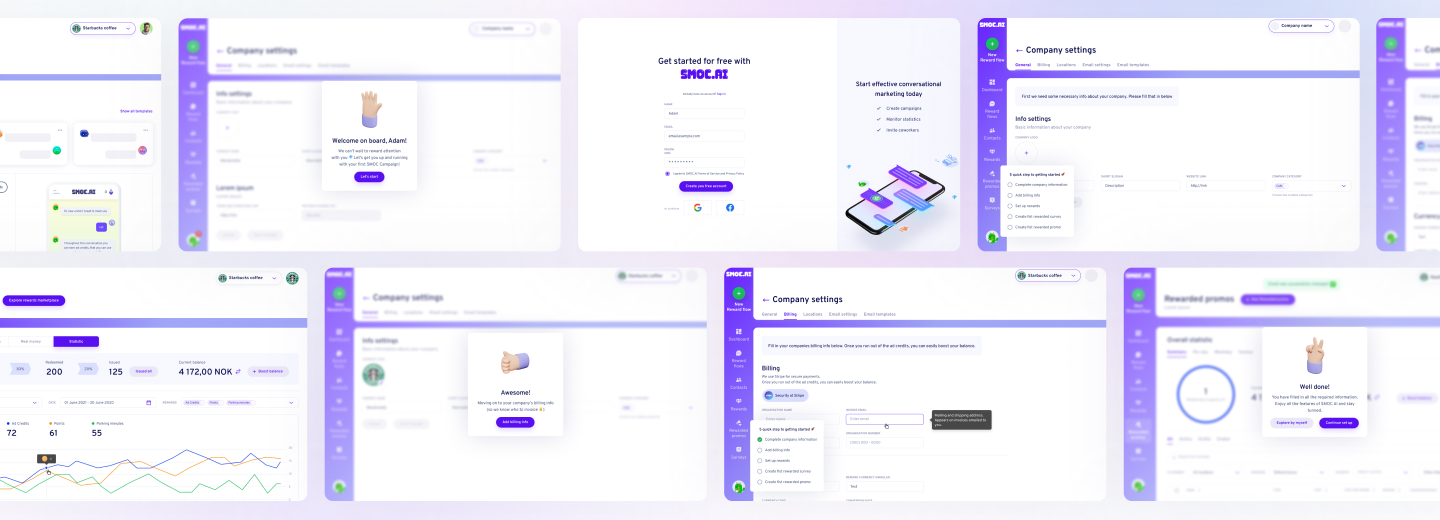You should first research the market to find out more about your customers if you want to market successfully. When you begin with a new business idea, look for customers in another market, or just update your current product, market research will help you make the right decisions. Not every research project is of high quality. Every type of market research, be it surveys, focus groups, observational studies, or data analysis, serves its purpose.
We’ll break down the main types of market research, show how they differ, and help you choose the right one for your business goals. With these types of market research techniques, anyone in the process of startup, marketing, or product development can make better decisions and feel more confident.
what’s in the article
- What Is Market Research?
- 8 Main Types of Market Research
- How to Know Which Market Research Method to Use
- Which Market Research Works Best at Different Business Phases?
- How to Conduct Effective Market Research?
- Conclusion
What Is Market Research?
So, what is market research? Marketing research covers collecting data, analyzing the results, and choosing action based on what happens in the target market, among competitors, and to the audience. It allows companies to identify what customers need and expect, how they make their decisions, and any obstacles they have to overcome. Market research gathers facts or thoughts about the market, which boosts direct strategies for developing products, marketing, sales, and customer service.
Why Market Research Matters for Startups
Startups need to do market research because it is essential for their success. With a small amount of resources and no room for mistakes, new businesses must pay close attention to the market from the beginning, which could determine their success. Startups use different market research types to test their ideas, identify the right kind of customer, discover what customers need, and decide on the most suitable action plan.
If there is no research, startups may end up making a product that no one buys, advertising to the wrong people, or not seeing how strong their competitors are. Thanks to it, they have a strong base to progress, make changes if necessary, and invite investors with believe in what they are doing.

Looking to Build an MVP without worries about strategy planning?
EVNE Developers is a dedicated software development team with a product mindset.
We’ll be happy to help you turn your idea into life and successfully monetize it.
8 Main Types of Market Research
There’s no one-size-fits-all approach when it comes to understanding your market. Your goals, the time frame you need, and how much you are willing to spend help determine which research is best for you. Below you will find eight main types of market research, each with a specific purpose, way of being carried out, and ideal use.
Primary Research
In primary research, you collect data directly from where it comes. One way to do this type of research is with the help of surveys or interviews. It becomes essential when you want to know what your customers prefer, what they need, or the issues they face. As you are in charge of the study, the results are important, but it will take more effort and resources.
Secondary Research
Secondary research is based on material that was collected and published before. You could try industry reports, government-provided statistics, academic research, or examine what your competitors are doing online. It helps you explore new trends, compare your results to others, or know what is happening in the market. It is easy and cheap to use secondary data, but it might not always give you what you are looking for.
Qualitative Research
Qualitative research tries to understand the motivations behind what consumers do. You need to discover motivations, opinions, and emotions, since those are not numbers. In-depth interviews, open-ended surveys, and focus groups are some of the typical ways to collect information. To find out what customers want and think, and discover gaps in the data, this type of study is used.
Quantitative Research
Unlike qualitative research, quantitative research uses numbers and statistics. You collect data with the help of surveys, polls, and questionnaires that are available via the internet. It allows you to follow trends, test out your ideas, and use factual knowledge. It makes it possible for companies to test out ideas and discover what their customers like and use.
Exploratory Research
Exploratory research helps you in the first stage of a project when you are still figuring out the issues or coming up with ideas. There are many approaches to use this type of market research, and it usually involves talking to customers or observing their behavior. This method is useful when you are entering a new market or searching for problems or possible gains.
Descriptive Research
Descriptive research helps you build a clear picture of who your market consists of. It gives you fact-based details on things such as market size, the timing of purchases, and the groups of people who purchase. Most of the time, this type of research is done with surveys or data analysis and is good for describing trends or counting specific characteristics.
Causal Research
Causal product market research is designed to discover how two events are connected by cause and effect. It helps us understand the effects of price changes or new advertising campaigns on conversions. Usually, it means trying out experiments, A/B tests, or simulations. Try this approach when you want to understand the connection between different variables to help make strategic decisions.
Predictive Research
Through looking at previous data and market evolution, changes, predictive research tends to figure out what might happen next. Analysts use tools like advanced analytics, AI, or machine learning to try to figure out what might happen with things like sales, marketing, or what customers might want in the future. Planning helps companies get ready for what might happen and makes it easier for them to decide what should come next.

Proving the Concept for FinTech Startup with a Smart Algorithm for Detecting Subscriptions

Scaling from Prototype into a User-Friendly and Conversational Marketing Platform
How to Know Which Market Research Method to Use
Your goals, the resources you have, and the stage of your business play a big role in deciding on the best market research methodologies for you. It is important to use a research method that fits your questions. The following cases can help you decide which type of research you should use for your goals.
Testing Market Demand
If the main aim is to check if people are interested in what you have to offer, look for ways to get direct feedback from your target audience. Surveys, landing page testing, and beta trials are good examples of market research to use in this phase. Knowing if people are willing to pay for your idea, how much they are ready to pay, and what features they care about matters more than just knowing they like your idea. It is most important during the early parts of a business’s journey.
Analyzing Competitors
Secondary research can help you find out about your competitors’ positioning, pricing, and the kind of customers they serve. First, collect resources such as industry reports, websites, reviews, and social media. You can also use SWOT analyses or keyword research tools to see where your competitors stand. To gain a better understanding, you can pair this with qualitative research like interviews, asking people what makes them choose a specific competitor.
Assess the Timeframe
The time available for your research can shape the market research methods you can use. When you’re running short on time, quantitative surveys and secondary studies are easier to complete and study. Meanwhile, qualitative interviews, focus groups, or experiments give us more detailed information, though they generally take more time to plan, carry out, and study. If you want to work quickly, choose data that is fast to collect or view, but remember you may lose some detail and accuracy.
Which Market Research Works Best at Different Business Phases?
As your company grows, your research requirements will change as well. The types of market analysis that help a startup succeed at the beginning may not be the same ones that work well for a scaled or established business. With every growth stage comes different challenges, questions, and aims, so you should change the way you do your research. This is how to choose the best type of market research that matches your current stage of business development.
For Startups and MVPs
Validation and discovery should be the main goals for startups and companies developing an MVP. At this moment, the most important queries are: Will the product be useful to people? Who are our early adopters? What features stand out the most to them?
Using interviews, surveys, and prototype testing is very useful in exploratory research. The different types of market research allow founders to see the problems in the market, improve their solution, and not depend on guesses about what the users need.
For Growing Businesses
As enterprises get bigger, the main concern becomes improving how things are done and increasing their reach. You are most likely aiming to capture more of the market, get more customers to buy, and bring new products to the market.
Here, using quantitative types of market analysis becomes important because it gives clear data to back up decisions on pricing and marketing. By doing descriptive research and analyzing competitors, it’s possible to fine-tune messages, group audiences, and find trends in how customers act. It is also a good time to do predictive research to see what customers might need in the future.
For Enterprise
Many large companies work in several markets, where customers have multiple steps in their journeys and the businesses handle a lot of data. Most of their research focuses on strategic planning, new ideas, and handling risks.
Companies mostly gain from causal and predictive research since they help understand what happens as a result of changes and predict future trends. Here, analysts rely on advanced analytics, AI-based insights, and trends happening in the global market. Some companies carry out regular tracking studies to keep watch over their brand, how their customers feel, and any new developments in the market.

Need Checking What Your Product Market is Able to Offer?
EVNE Developers is a dedicated software development team with a product mindset.
We’ll be happy to help you turn your idea into life and successfully monetize it.
How to Conduct Effective Market Research?
Getting to know your customers is the basis for any effective business plan. By researching the market, you can find out about customer habits, latest industry trends, and how other players in the industry are doing.
- First, outline your objectives, whether you want to launch a new product, move into a different market, or make customers happier.
- Combine talking with people through interviews and focus groups, with using surveys and data analysis.
- Take time to analyze what you find to spot trends and chances for improvement.
By staying data-driven and customer-focused, you can make smarter decisions that align with real market needs.
Conclusion
Different types of market research aren’t just about gathering data; they also reduce risks, help businesses see opportunities, and ensure they meet what customers want. Choosing the right research method can guide the entire direction your business takes, whether you are a startup or an established company.
When you know what type of market research to use and when to use it, you can decide with confidence, improve your strategy, and craft products and services that are well-received. Find the right research and use it at the right time to guide your decisions.
At EVNE Developers, we take it a step further by helping companies make better decisions from the beginning. We provide custom research options for clients so they can reach their digital goals. Whether you’re wanting to check if your idea makes sense, working on a new feature, or trying to grow your service, we help you make good use of your data by giving you smart advice and technical help.
Exploratory and primary research are best if you need to find out whether an idea is useful and to understand customer needs early on, exploratory and primary research are best.
As a best practice, quarterly or just before significant events (such as new product launches). By staying up-to-date with research, you can respond to new trends in the market and among customers.
Tools like SurveyMonkey, Google Forms, SEMrush, Typeform, Hotjar, and Statista make surveys, studying competitors, and tracking users possible. To handle more complicated work, you may use Tableau, Qualtrics, or Google Analytics.

About author
Roman Bondarenko is the CEO of EVNE Developers. He is an expert in software development and technological entrepreneurship and has 10+years of experience in digital transformation consulting in Healthcare, FinTech, Supply Chain and Logistics.
Author | CEO EVNE Developers


















